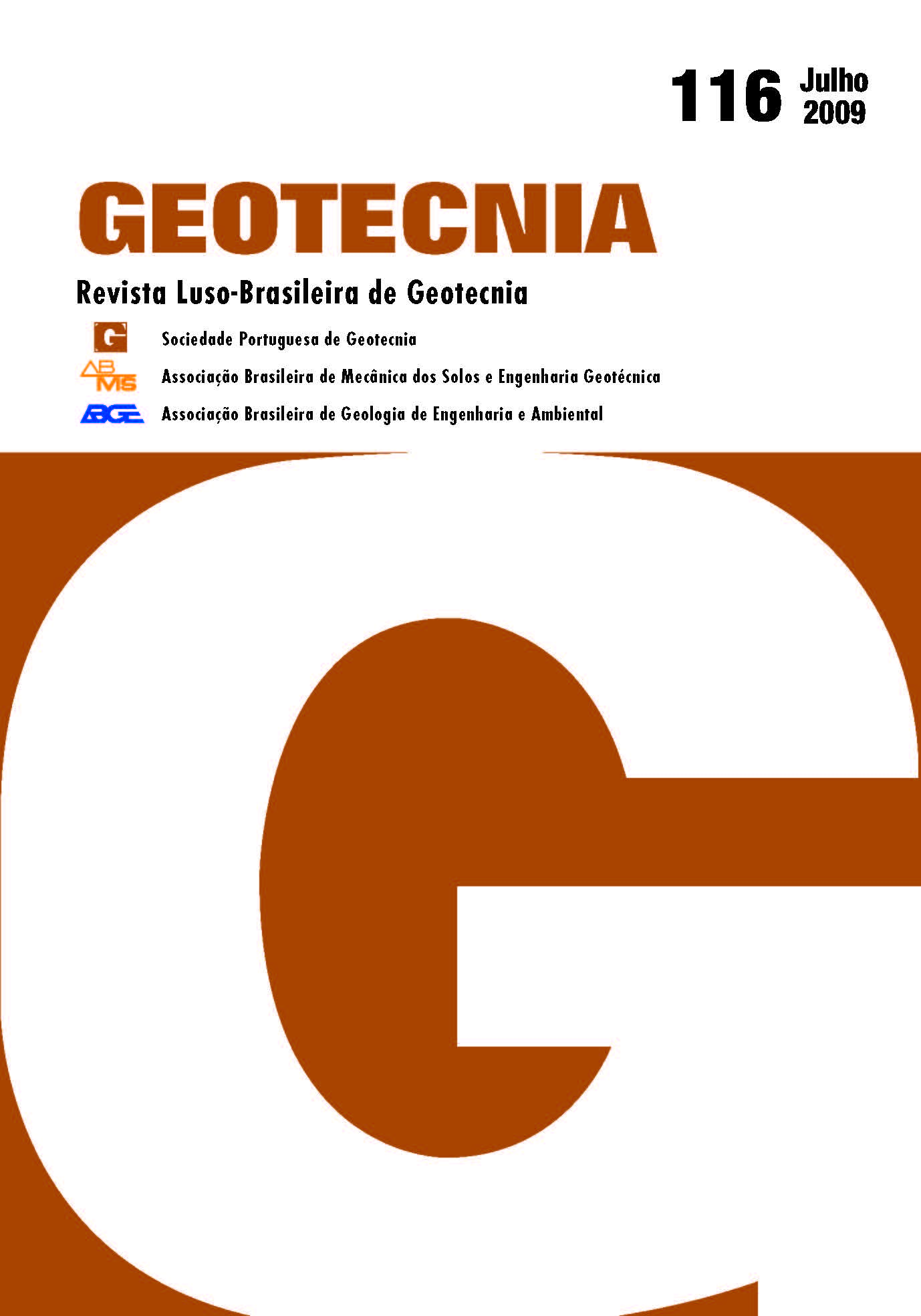Retroanálise 3d do túnel do término de Odivelas. Análise do risco de danos em edifícios adjacentes
DOI:
https://doi.org/10.14195/2184-8394_116_1Palavras-chave:
Túneis, Interacção solo-estrutura, Retroanálise 3D, Análise de risco de danos em edifíciosResumo
Neste trabalho apresenta-se a obra do túnel do Término de Odivelas, pertencente à Linha Amarela do Metropolitano de Lisboa e os resultados da monitorização efectuada durante o ano de 2003. Em seguida determina-se os parâmetros que definem as curvas empíricas de Gauss e de Yield Density que melhor se ajustam à realidade, descreve-se a metodologia usada nos estudos de retroanálise da obra, com destaque para a modelação numérica tridimensional e retiram-se algumas conclusões acerca das características dos terrenos interessados pela escavação, pertencentes à Formação de Benfica. Em seguida, descreve-se uma metodologia de avaliação do risco de danos em edifícios, efectuada com base em métodos empíricos e análises numéricas bidimensionais e tridimensionais. Comparam-se os resultados obtidos da sua aplicação a um edifício de cinco pisos situado nas proximidades do túnel do Término de Odivelas. Por fim, retiram-se algumas conclusões acerca da importância da consideração da rigidez equivalente do edifício e a sua interacção com o meio circundante.
Downloads
Referências
Almeida e Sousa, J. (1998). “Túneis em Maciços Terrosos. Comportamento e Modelação Numérica”. Tese de doutoramento, FCTUC, Coimbra.
Boscardin, M.D. e Cording, E.G. (1989). “Building response to excavation induced settlement”. ASCE, Journal of Geotechnical Engineering Division, Vol. 115, nº1, 1-21.
Burland, J.B. e Wroth, C.P. (1974). “Settlement of buildings and associated damage”. Proc. of Conf. on Settlement of Structures, Cambridge, UK, 611-654.
Burland, J.B. (1995). “Assessment of risk of damage to buildings due to tunnelling and excavation”. Earthquake Geotechnical Engineering, Balkema, 1189-1201.
Celestino, T. B. e Ruiz, A.P.T. (1998). “Shape of settlement troughs due to tunnelling through different types of soft ground”. Felsbau, Vol. 16, nº2, 118-121.
Diniz Vieira, G. (2007). “Retroanálise 3D de um túnel superficial do metropolitano de Lisboa. Análise de risco de danos em edifícios”. Tese de mestrado, FCTUC, Coimbra.
Ferconsult S.A. (2001). “Projecto da Empreitada ML 609/01: Execução dos Toscos do 55º Troço (Parcial) – Término de Odivelas, da Linha Amarela, do Metropolitano de Lisboa”.
Franzius, J.N. (2003). “Behaviour of buildings due to tunnel induced subsidence”. Tese de doutoramento, Imperial College of Science, Technology and Medicine, Londres.
Melâneo, F.; Jorge, C.; Leal e Sousa, R. e Diniz Vieira, G (2004). “Linha Amarela do Metropolitano de Lisboa – Término de Odivelas”. Actas do IX Congresso Nacional de Geotecnia, Vol. III, Aveiro, 319-330.
Potts, D.M. e Addenbrooke, T.I. (1997). “A structure's influence on tunnelling-induced ground movements”. Proc. Instn. Civ. Engnrs. Geotech. Engng. Vol. 125, 109-125.
Rankin, W.J. (1988). “Ground movements resulting from urban tunnelling: predictions and effects”. Engineering Geology of Underground Movements, Londres. 79-92.




